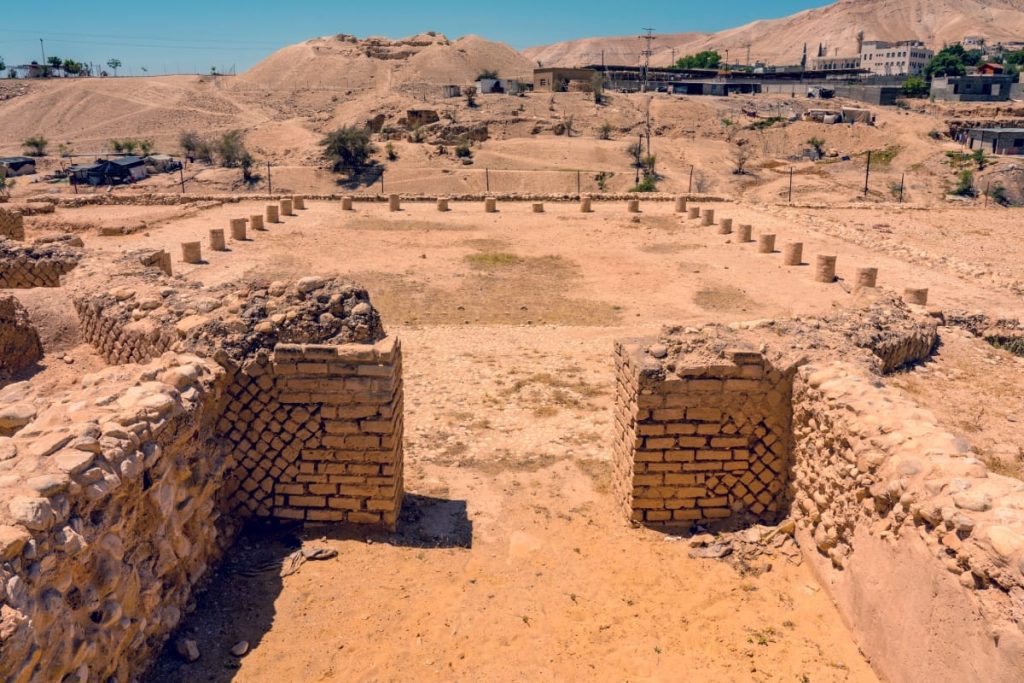Just outside of Jerusalem lies the layered remains of Herod’s Royal Palaces that was once a great king of the land. Tulul Abu Al-Ala’iq is the site where the palaces of the Hasmonean dynasty and Herod the Great stood centuries ago. The palaces were strategically placed below the Judean Desert‘s high cliffs; close enough to Jerusalem so that the kings could still effectively rule while away from the city.

When exploring the ruins; it is fascinating to learn about the ancient architectural techniques used and the hand-crafted detail that was painstakingly added to every part of Herod’s royal palaces. You will be amazed by the intricate methods used to make their palace a functioning piece of art; agriculture, and pleasure. You can join me on a private tour of King Herod’s royal palaces to gain a deeper understanding of how the palaces worked and what it would have been like to live there during the times of the ancients.
Some More About Herod’s Royal Palaces
Herod’s royal palaces have received extensive excavations over the past century; beginning with the famous Charles Warren. It didn’t take long for him to determine that the archaeological site was from the Roman period. But it wasn’t until after the Yom Kippur War did the excavations truly begin. Over ten seasons, 30 hectares of land were excavated; and what they would was genuinely astonishing.
It was determined that the area was originally a singular winter palace for the kings of the Hasmonean dynasty and that later; King Herod the Great built his own series of winter palaces over the top. Three palaces have been found, each one grander and more expansive than that of the Hasmonean palaces. Today, you can walk through the ruins of these ancient palaces and imagine what it would have been like to vacation here in the olden days.

While you can still see parts of the original Hasmonean palace; the majority of the site contains the remains of Herod’s royal palaces. So the first palace was built on land leased from Queen Cleopatra of Egypt; who had received it as a gift from Marcus Antonius. The palace has distinctly Roman features; including a building with a central courtyard and an elaborate bathhouse.
The second palace was built in response to the destruction of the first palace after an earthquake. Again, the building was centered around a courtyard; although it was oddly raised. The third palace was the largest of Herod’s royal palaces; covering over seven acres with a bridge to connect the two wings! Furthermore, this palace was stunning in its elaborate details, from the walls decorated with frescos to the bathhouse that contained five distinctly different rooms, each serving a different purpose.







